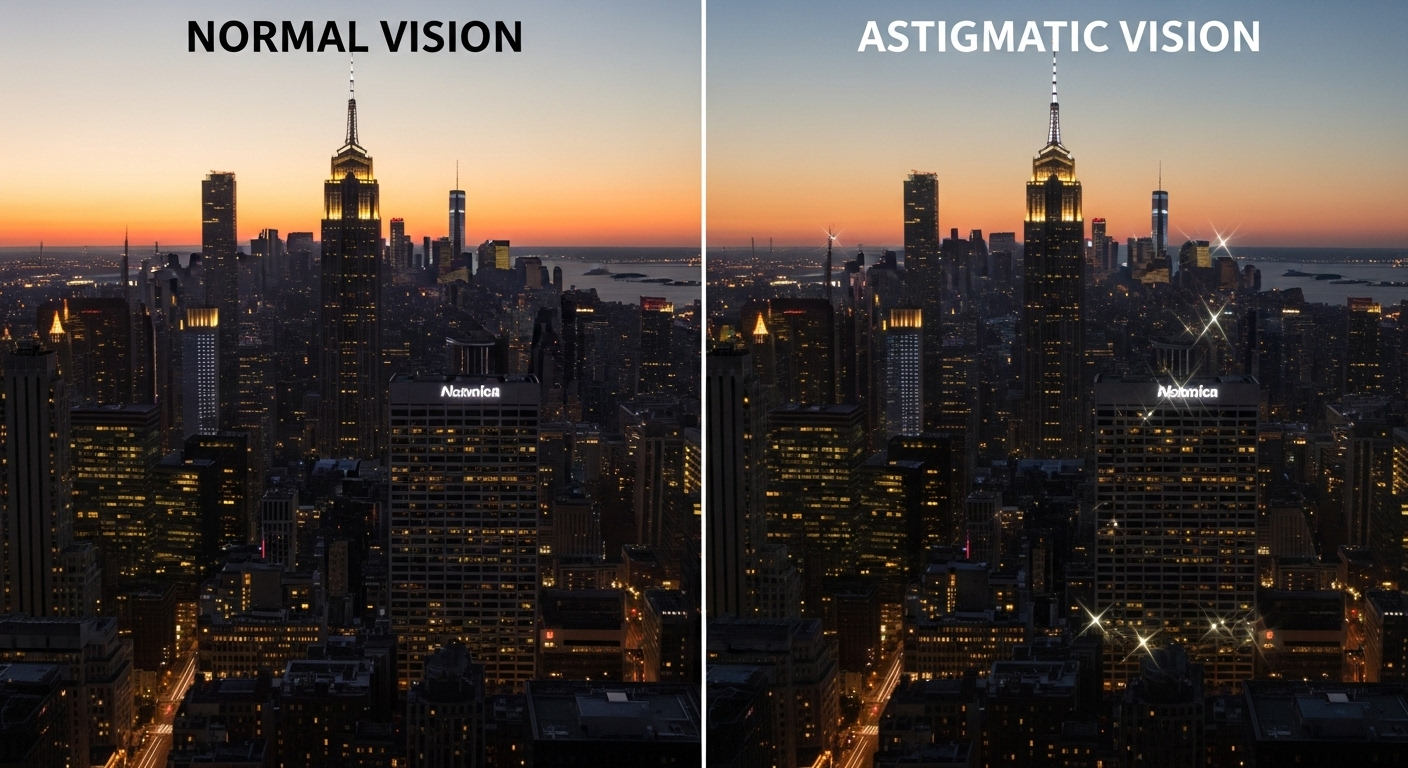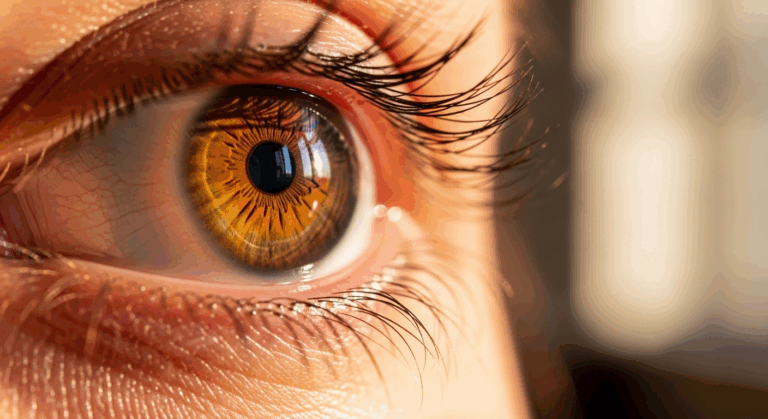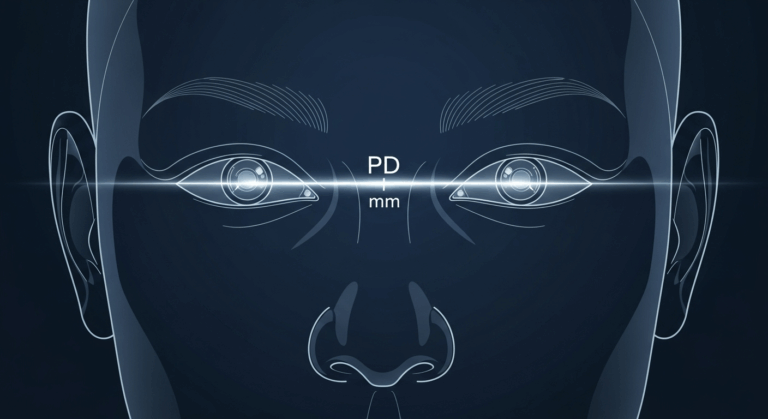If you’ve ever squinted at a sign and thought, “That letter looks stretched,” you’re not alone. We’re often asked how astigmatism really differs from “normal” vision — and what that means for reading, driving at night, or staring at screens all day. This guide breaks it down in plain language, with a little expert perspective from optometry and ophthalmology (think: what your eye doctor sees and treats every day).
Remember: this is a primer — if your vision is bothering you, see an eye care professional for a proper exam.
What is “normal” vision?

Normal vision (emmetropia) means the eye focuses light so that you see a single, sharp image on the retina without corrective lenses. In practical terms, things appear crisp and round (lights, faces, letters) across the visual field at the distances your eyes are focused for. Think of a camera in focus: straight lines stay straight, circles stay round, and letters don’t smear.
What is astigmatism?
Astigmatism is a common refractive error where the cornea (or sometimes the lens) is shaped more like an egg or an oval than a perfectly round ball. Because of that uneven curvature, light rays don’t meet at a single point on the retina — they focus at different places, which causes blur or distortion. In plain terms: instead of seeing one crisp image, some lines or directions look stretched, doubled, or smeared.
How astigmatism happens (the short version)
- Corneal astigmatism: the cornea’s curvature differs across meridians (like an oval instead of a sphere).
- Lenticular astigmatism: shape of the internal lens causes the same problem.
Some people are born with it; others develop it after eye injury, surgery, or corneal diseases.
Types you’ll hear about
- Regular vs irregular: Regular astigmatism follows predictable meridians and is easier to correct with glasses or soft contacts. Irregular astigmatism (from scars, keratoconus, ectasia) may need rigid lenses or surgery.
Key differences: Visual clarity

Normal vision
- You get a single, sharp image across the visual field.
- Letters are crisp and shapes keep correct proportions — no stretching along certain directions.
Astigmatism
- Blur or distortion is directional: horizontal lines might look clearer than vertical ones (or vice versa).
- Letters can seem tilted, stretched, doubled, or “smeared” — especially at small sizes or at certain angles.
Think of looking at a circle through a slightly squashed lens — it becomes an oval. That’s what astigmatism does to parts of your visual scene.
Key differences: How things look at night

Normal vision
- Lights remain round and well-defined; glare is minimal unless there’s another issue (like cataracts).
Astigmatism
- You might see starbursts, streaks, halos, or ghosting around headlights and streetlights.
- Night driving becomes trickier because contrast drops and those streaks hide details. Many patients describe headlights with rays or small spider-like flares — annoying but common with uncorrected or under-corrected astigmatism.
How astigmatism affects daily life
- Reading and fine work: Small print may blur or “shift.” You may tilt your head without realizing it to find a clearer angle.
- Digital screens: Eye strain and fatigue happen sooner because your visual system works overtime to compensate.
- Driving at night: Glare and streaks reduce contrast and make identifying hazards harder.
- Headaches and squinting: Constantly trying to sharpen a blurred image leads to tired eyes and tension headaches.
Mild astigmatism may be barely noticeable; moderate-to-severe forms can interfere with school, work, and safety.


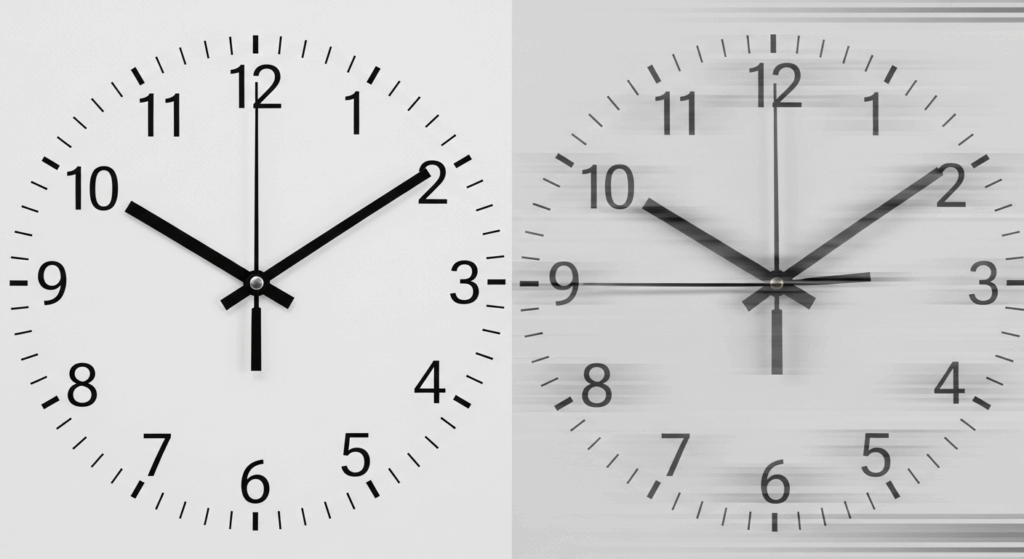
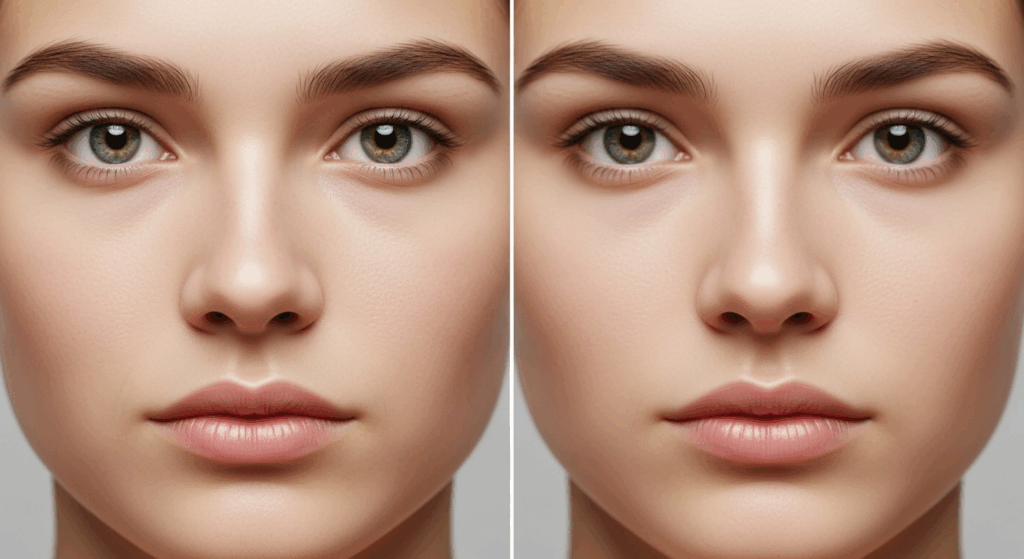

Diagnosis: what your eye doctor will do
Your optometrist or ophthalmologist will:
- Take a history (what’s bothering you, when it happens).
- Do a refraction (the standard “which is better, 1 or 2?”).
- Measure corneal shape (keratometry or corneal topography) if needed — important for contact lens fitting and detecting irregular astigmatism.
These tests tell your doctor the type and amount of astigmatism and whether the blur is coming from the cornea or the lens.
Treatment & correction options
Short answer: yes — astigmatism is usually correctable.
- Glasses: Cylindrical lenses (or a combo of sphere + cylinder) are the simplest, safest fix.
- Contact lenses: Toric soft lenses or rigid gas-permeable lenses for certain irregular cases.
- Refractive surgery: LASIK or PRK can correct many regular astigmatisms by reshaping the cornea — but candidacy depends on corneal thickness and eye health.
Remember: treatment choice depends on severity, lifestyle, and eye health. We often tell patients that the best solution is the one they’ll actually wear comfortably.
Practical tips for daily life with astigmatism
- Get an updated prescription and wear it consistently — even small improvements make a big difference.
- For night driving, keep windscreen, mirrors, and headlights clean — glare multiplies with dirt.
- Take breaks during long screen sessions (the 20-20-20 rule helps: every 20 minutes look 20 feet away for 20 seconds).
- If contacts feel blurry, ask about toric lenses or a refit rather than pushing through discomfort.
When to see an eye care professional
If you notice: persistent blur, double vision, new halos, sudden change in vision, or headaches tied to visual tasks — book an exam. Also schedule regular eye checks: children and adults should follow the schedule recommended by their eye care provider.
Conclusion
Normal vision gives you crisp, single images; astigmatism adds a directional blur or distortion that can make letters look stretched and lights look streaky at night. The good news is astigmatism is common and usually correctable with glasses, contacts, or surgery. If any of the signs above sound familiar, it’s worth a simple eye exam — because a small tweak in your prescription often restores clarity and comfort fast.
